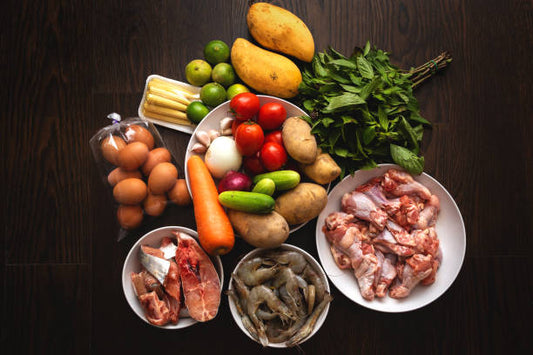The Importance of Having Well-Sharpened Knives *By Idalina Pereira, Founder of Bright Kitchen*
Hello, dear readers! Today, I want to share with you an essential piece of advice that is not only crucial for our safety but also for creating dishes with finely cut ingredients – the importance of always having well-sharpened kitchen knives.
Since I was young, one thing that was always emphasized in my parents' home was the need for sharp knives. During the 80s and 90s, our home was often filled with customers and friends. To ensure that we always had the best on the table, there was a paramount focus on quality. During these gatherings, my aunts, who were also collaborators at my father's factory, would lend a hand. One particular piece of advice they gave, which stuck with me, was never to wash the knives in the dishwasher or with hot water that could damage the blade's edge.
I can tell you that I still follow this advice today, and I've passed it on to my daughters as well. Are these just myths or old-fashioned beliefs from our ancestors? I've experimented myself, and I can confirm that knives do lose their sharpness over time when not cared for properly.
Do you know that there are tricks to sharpen a knife properly? Today, I will show you how to sharpen a knife, making food preparation for a delicious dish much easier.
But let's get right into what matters – what we should do to keep our knives always razor-sharp.
Sharpening a Knife:
Before I teach you how to sharpen a knife, let's distinguish between the terms "sharpen" and "hone." Although many use these words interchangeably, there is a slight difference between them.
Sharpening a knife involves removing metal from the blade to create a sharp cutting edge. So, when we say the knife is "dull," it means it needs to be sharpened step-by-step to regain a sharp edge and become as effective as before.
Honing, on the other hand, simply realigns the existing cutting edge, correcting any minor bends or waves that may have appeared on the blade.
However, the most practical and common way to sharpen knives is by using sharpeners that are readily available for you.
"I have another secret from my aunts, which they shared from their vast experience. Since they had worked in cutlery from a very young age, first in my great-grandfather's factory and later in my father's, they used to sharpen knives on the edges of a house stone. They would always, always sharpen the knives there, and there's no doubt that the knives would be as good as new afterward.
That's why we have the sharpening stone.
How to Sharpen a Knife on a Stone:
Sharpening a knife on a stone is one of the most commonly used methods to maintain knives in good condition. Since stones are made of a material that's harder than the knives, it's much more practical to create a sharp edge during the sharpening process.
Here's the step-by-step process for sharpening a knife on a stone:
1. Soak the stone in water for five minutes. You can place it in a container with water.
2. Position the stone on a stable and secure surface.
3. Slide the knife on the less porous side of the stone at an angle of approximately 30 degrees.
4. Repeat the same movement on both sides of the knife until it becomes sharp and then store it safely in your kitchen.
Another modern and effective technique is sharpening the knife with a file. For those unfamiliar, a file is used precisely for sharpening metal surfaces, such as pliers and even saws.
So, if you only have this tool at home, feel free to use it to sharpen your knife. Here's how to sharpen a knife with a file:
1. Rest the knife on a flat surface.
2. Run the file along the entire blade of the knife, starting from the handle and moving towards the tip.
3. Repeat the same process on the other side of the blade until you achieve a perfect cutting edge.
One important tip to remember is to always clean the knife before using it!
Once you've finished sharpening the knife, make sure to wash it to remove any steel particles that may have been released during the sharpening process. Once you've cleaned everything thoroughly, you can use the knife to cut ingredients and prepare delicious dishes in your well-equipped kitchen.
These are just a few important tips to keep our knives always well-sharpened. In our store, you'll find knives of various sizes and styles. For complete organization and safety, I highly recommend knife blocks or holders. This way, after washing the knives, you can put them right back in their place, avoiding mixing them with other utensils. My personal favorite knife blocks are the ones that come with a versatile pair of scissors.
Who doesn't need a pair of scissors in the kitchen? And it's always best to have them in the right place to avoid searching for scissors to cut open bags of groceries.
Remember, having well-sharpened knives is not just a matter of convenience; it's a fundamental aspect of kitchen safety and a key element in creating delightful dishes for your family and friends.
In our store, you'll find a wide selection of knives to suit your preferences and needs. Let's keep our kitchens bright and our cooking experiences enjoyable by maintaining the sharpness of our knives.
Happy cooking!
With warm regards,
*Idalina Pereira, Founder of Bright Kitchen*



